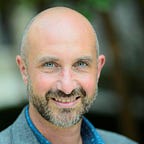An Army of Artists
by Adam Huttler, Executive Director at Fractured Atlas
“If every artist in America’s work force banded together, their ranks would be double the size of the United States Army,” reports Sam Roberts in today’s NY Times.
This conclusion is drawn from a groundbreaking new report from the National Endowment for the Arts titled Artists in the Workforce: 1990–2005. I realize not everyone will be as interested in this as I am. Not only do I run an organization whose customers are exclusively artists, but I’m a shameless statistics junkie.
Still, what’s significant about this study (at first glance anyway; I haven’t had a chance to read the whole thing yet) is that is provides some of the basic data on our industry that has historically been entirely elusive. Here’s how the NEA describes the study:
Artists in the Workforce: 1990–2005 is the first nationwide look at artists’ demographic and employment patterns in the 21st century. Artists in the Workforce analyzes working artist trends, gathering new statistics from the U.S. Census Bureau to provide a comprehensive overview of this workforce segment and its maturation over the past 30 years, along with detailed information on specific artist occupations.
The use of census data is probably the only practical way this research could have been conducted, but it does raise some important questions about the report’s comprehensiveness:
First, census data is biased towards a strictly economic definition of employment. The study does include people who identified an arts field as their second job, but it includes only 300,000 of such individuals, compared to 2,000,000 who claimed an arts field as their primary employment. While I don’t have any hard data to refute this, bushels of anecdotal evidence suggest there are at least as many, if not more, “semi-professional” artists as there are folks who make their living exclusively or primarily through their art. I even spoke with someone at the US Department of Labor who believed that their arts-related employment figures were 40–60% below the true numbers. So the fact that the NEA report counts just 300,000 artists whose income comes mainly from other sources strikes me as being seriously under-representative of this broad segment of the industry.
Second, census data is biased towards white, mainstream artists whose work falls into a European tradition. One of the things I’ve learned in our local advocacy work is that a white, middle-class college graduate is much more likely to self-identify as an artist than an equally talented, dedicated practitioner of a non-European folk tradition. Likewise, a graduate of Yale’s drama school who pays his rent by waiting tables thinks of himself as an actor, while a Latino janitor who happens to be a brilliant amateur photographer would never in a million years call himself an artist (this latter example is from a real person I met in Brooklyn). This is another factor that suggests the NEA data is almost certainly under-reporting certain large segments of the industry.
These are real concerns, but they shouldn’t seriously diminish the significance of the NEA report. Frankly, despite the fact that the report’s numbers are probably much lower than reality, I suspect many will be shocked at the sheer size of the U.S. arts sector. Artists are often seen (and see themselves) as operating within a strange niche at society’s margins. It’s hard to retain this stereotype when you learn that our ranks exceed those of lawyers, doctors, police officers, or farm workers, and roughly equal those of the active and reserve armed forces. Think about that the next time someone implies that you’re not an authentic American or that you don’t contribute anything meaningful to society. Oh yeah, and don’t forget to vote.
Adam Huttler is the Executive Director at Fractured Atlas, a nonprofit technology company that helps artists with the business aspects of their work. To learn more about Fractured Atlas, or to get involved, visit us here.
